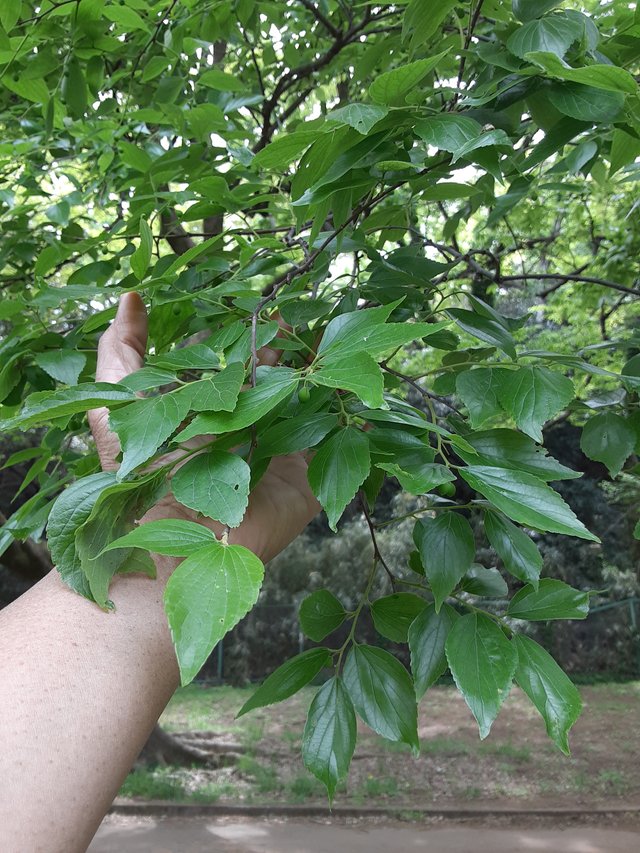
Celtis sinensis, commonly known as the Chinese Hackberry, Chinese Nettle Tree, or Japanese Hackberry, is a large and impressive tree native to eastern Asia. Here's a detailed description of its characteristics, including its leaves:
Tree Description:
- Size and Shape: Celtis sinensis can grow up to 20 meters (65 feet) tall, with a broad, spreading crown that can reach 12 meters (40 feet) in diameter. It's a deciduous tree, meaning it loses its leaves in fall and stands bare through winter.
- Bark: The bark is smooth and grayish in younger trees, developing shallow fissures and a more rugged appearance as it matures.
- Flowers: Small, greenish-yellow flowers appear in clusters in spring, followed by inconspicuous green fruits that ripen to a dark orange or red in fall. These fruits are attractive to birds, who readily disperse the seeds.
Leaves:
- Arrangement and Shape: The leaves of Celtis sinensis are a key feature, arranged alternately along the stems. They are simple, oval-shaped (ovate) with pointed tips (acuminate), and range from 4.5 to 9 centimeters (1.8 to 3.5 inches) long and 3 to 4.5 centimeters (1.2 to 1.8 inches) wide.
- Surface and Edges: The upper surface of the leaf is typically smooth and glossy, while the underside may have a slightly hairy texture. The margins are serrated, meaning they have small, saw-toothed edges, particularly in the upper half of the leaf. Towards the base, the edges may be more rounded or slightly truncated.
- Veins: Three prominent veins radiate from the base of the leaf, a characteristic shared by other hackberry species.
- Fall Color: In autumn, the leaves transform into a vibrant display of color, changing from their summery green to a beautiful golden yellow before falling.
Habitat and Uses:
- Native Range: Celtis sinensis thrives in warm temperate and subtropical climates. It's naturally found in eastern Asia, including China, Korea, and Japan.
- Adaptability: The tree is known for its adaptability to various soil types and can tolerate drought conditions once established. Despite its "nettle" name, the leaves are not stinging like true nettles.
- Ornamental Value: With its attractive foliage, interesting bark texture, and relatively fast growth rate, Celtis sinensis is a popular choice for parks, gardens, and streetscapes. It provides shade and offers visual interest throughout the year, particularly with its vibrant fall foliage.
- Other Uses: In its native range, the wood of Celtis sinensis is used for various purposes, including furniture, tools, and implements. The fruits are also sometimes eaten, though they are not considered particularly palatable.
Overall, Celtis sinensis is a versatile and beautiful tree with interesting characteristics, especially its distinctive leaves. Whether admired for its form, fall color, or ecological benefits, the Chinese Hackberry adds a touch of elegance and natural beauty to any landscape.
Ref.:
 |  |
Upvoted! Thank you for supporting witness @jswit.
Downvoting a post can decrease pending rewards and make it less visible. Common reasons:
Submit